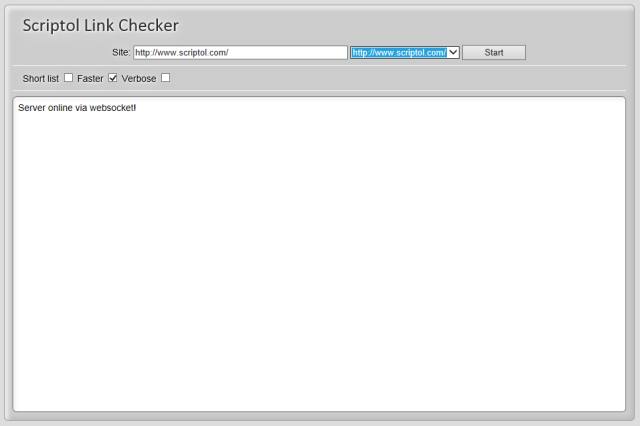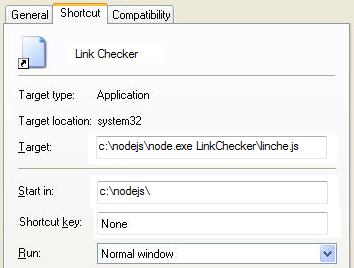Link Checker with graphical user interface
The tool to test for broken links can be used locally with an HTML interface.
One of the advantages of the graphical interface is that when a redirected link is displayed, it's possible to click directly on it to get the new URL. Note that the "unredir" script on this site automatically replaces redirected links, but without visual control over the content of the now-linked page.

But the installation of the GUI is complex, much more than the command line version, because it makes use of recent technologies.
However, once the installation completed (if you succeed), using the HTML 5 interface is so much simpler: just click on a desktop icon to activate the local server and a bookmark in the browser to start the script.
1) Install Node.js
Download the local server program on GitHub and follow the installation instructions. This JavaScript server is lightweight and easy to install on Windows.
2) IInstall the Socket.io module
Enter the Node.js directory and type:
npm install socket.io
3) Install the PHP socket module
Download and install PHP if it is not already. Copy the file php.ini-production in a new php.ini file in the same directory.
Remove the semicolon at the beginning of the following two lines in php.ini:
extension_dir = "ext" extension=php_sockets.dll
4) Install Link Checker
Download the linkchecker.zip archive on this site and unpack it in the Node.js directory.
If the server is for example in the c:\node.js directory, the script must be this subdirectory:
c:\nodejs\LinkChecker
5) Create a desktop icon to launch the server
Add an icon by clicking on the desktop with the right mouse button, then on New, then Shortcut. Fill in the fields as below:

Eventually replace c:\nodejs\ by the name of the directory where you installed the server, if different.
6) Create a bookmark in the browser
Open the Chrome or Firefox browser. Type in the URL bar:
localhost:1000/LinkChecker/linche.php
Then put the URL into a boorkmark according to the method specific to the browser.
You are now ready to use the test tool for broken links. When you want to check a site, click the server icon, then open the browser and click on the bookmark. Once the interface displayed...
Type the domain name for the site, with the protocol and a trailing slash, and click the Start button.
To stop the process, close the DOS window.
Download the LinkChecker archive...

